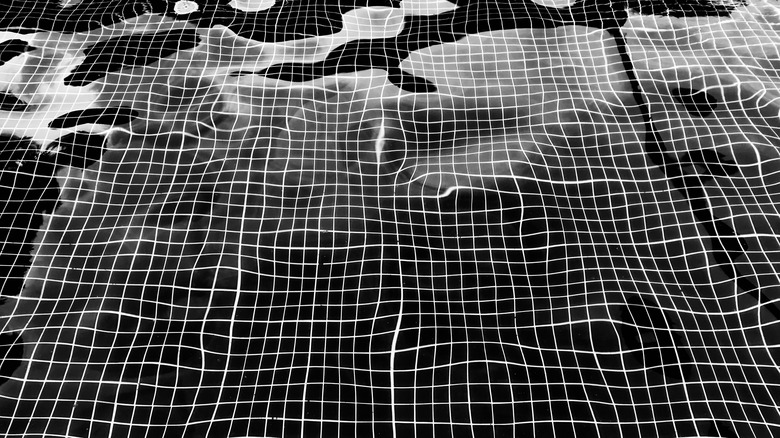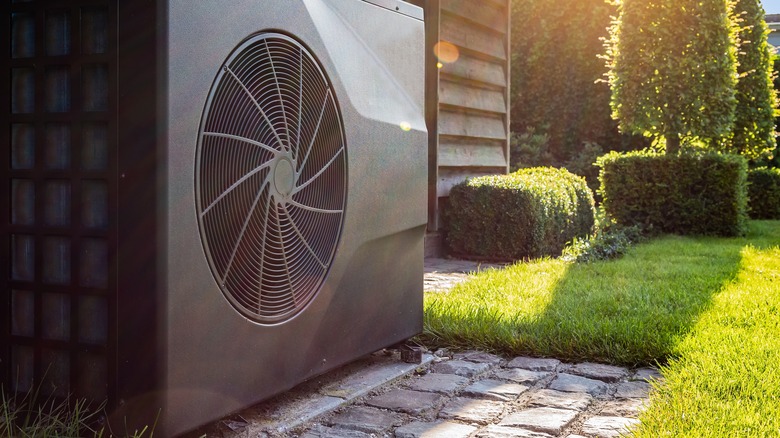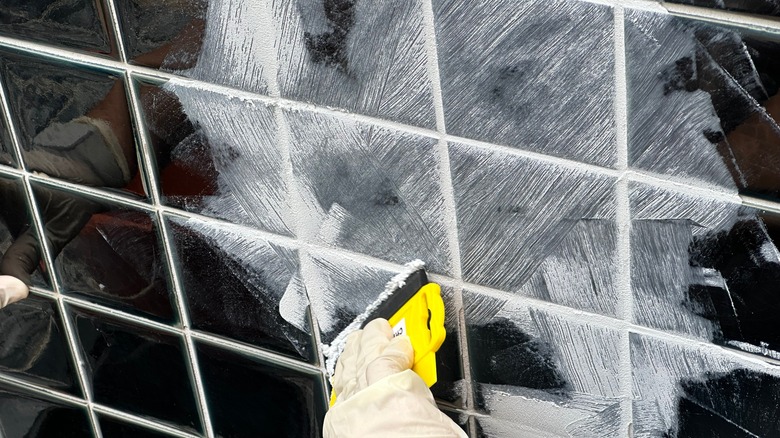The Money-Saving Benefits Of Choosing A Black Bottom Pool For Your Yard
As Renoir said, "The queen of all colors was black." This prehistoric staple shade exudes sophistication and elegance like no other. Its presence in pools is proof of that. Black bottom pools — swimming pools with dark liners — are the bold alternatives for homeowners tired of gawking at typical cerulean blue or white bottoms in their backyard oasis. While typically black, some even classify gray and deep navy-blue pool materials under this aesthetic. Visual drama aside, what's additionally fueling this trend's popularity is the savings pool owners make in heating. The reason? Black liners absorb heat, keeping the pool warm for longer durations.
Additionally, black bottom pools are a good choice for homeowners who install a pool in their backyard for their aesthetic appeal and real-estate value rather than frequent use. Since dark colors better hide grime and dust, they significantly reduce cleaning frequency and the corresponding payouts. That being said, the benefits may not be worth it if you raise curious kids and pets. As dark water distorts depth perceptions, it makes the pool appear deeper than it is and can become a jumping hazard, endangering lives. This also explains why certain states, like New York, have only allowed light colors on swimming pools' sides and bottoms. So, ensure you're in line with your state's stipulated standards and guidelines.
Black bottom pools lower heating costs
Let's face it. Adding a tropical retreat to your yard entails more than just selecting the most amazing swimming pool design. You also need to keep it heated during your fun time. Usually, pool heaters are priced between $1,500 and $ 7,500. Depending on the state and fuel used, run utility bills ranging between $200 (for pumps) and $850 (for propane) per month. However, black bottom pools can drive down these operating costs.
Unlike light colors that reflect all light, dark shades, especially black tones, absorb all wavelengths and transmute them to heat. So, a black pool's heating requirements diminish appreciably as the water remains heated for a considerable time. To put it into perspective, increasing the water temperature by an additional degree simultaneously raises energy consumption by 10% to 30%. This can be especially grating in colder climates with sky-high heating costs. Dark pools soften the expense pressure because they naturally trap more heat; sometimes equating to a 16-degree rise. The longer swim duration is a bonus even if it might not be a great idea in incessantly hot regions.
Save on cleaning with black pools
Dark bottom pools don't require frequent cleaning, freeing up your time to pursue other leisurely hobbies. Unless covered with bright-colored leaves or iridescent flowers, these pools can easily conceal dust, debris, dead insects, and possibly everything else that makes poorly maintained blue pools an eyesore. So there's less vacuuming to do. Plus, you can spread your cleaning routine and save on dusting supplies.
If the dirt gets to be too much, you can always highlight that you're giving your backyard a look reminiscent of a lagoon. After all, natural landscapes are dusty, too. There's a downside, though. Black bottom pools are just as good at hiding algae, which doesn't bode well for lounging or swimming. So, don't dither on cleaning excessively, and wipe down the sidewalls and liners periodically to keep algal blooms at bay. Be especially careful during summers because algae thrive on heat to multiply.


